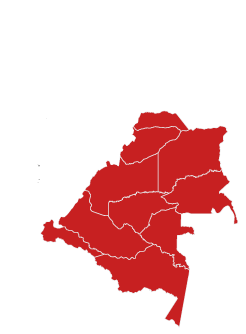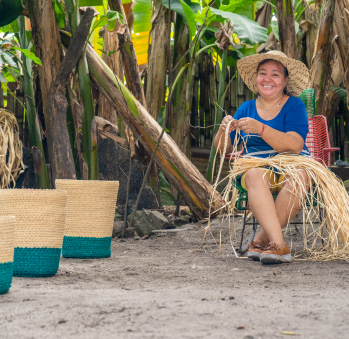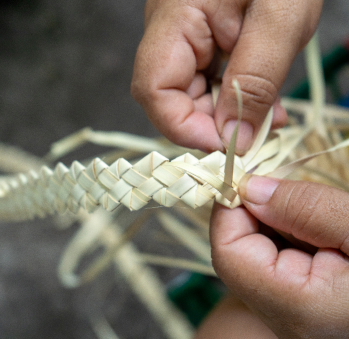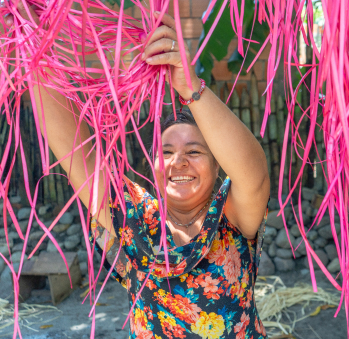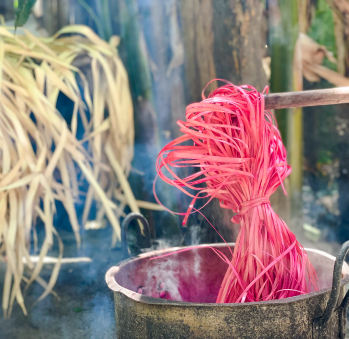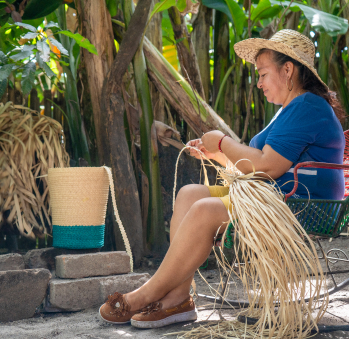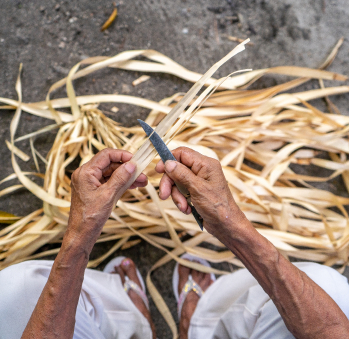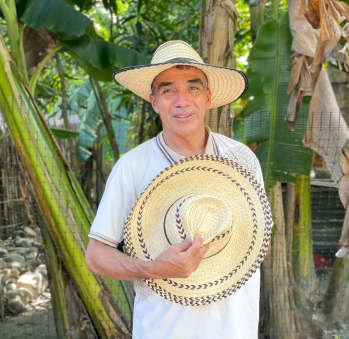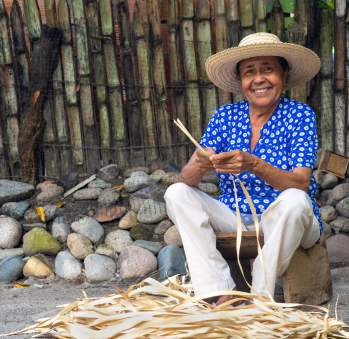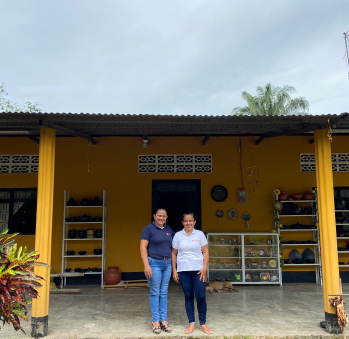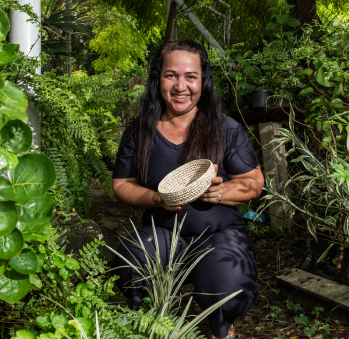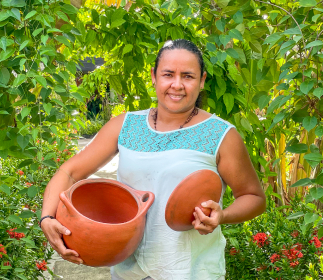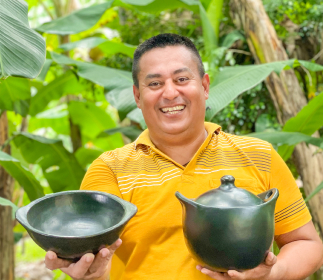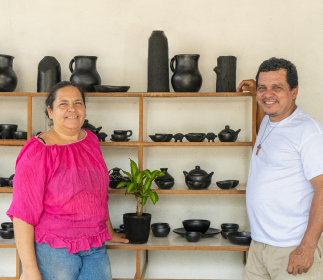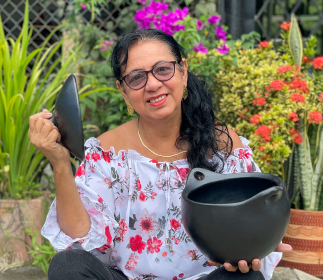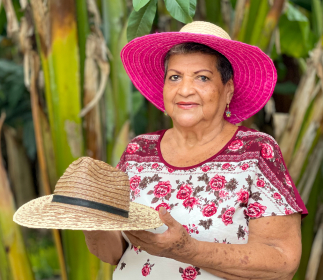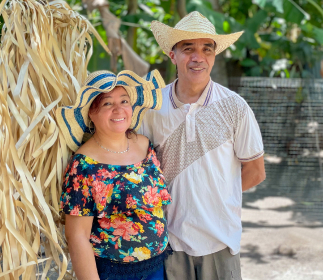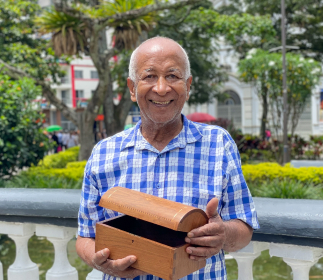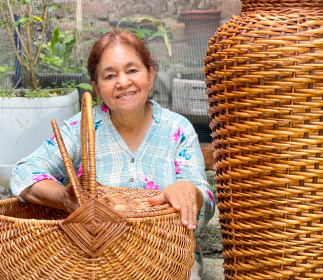Solángel Briñez y Ulises Quintero
Workshop: Asopalguamo
Craft: Weaving
Trail: Ibagué-Chipuelo Route
Location: El Guamo, Tolima
Even though Solange was born in Bogotá, her tolimense roots have made her return to her land. Her dad is from Tolima, and her mom is from Purificación, also known as the village of palms, and wove hats when she was young. Nonetheless, the decisión to return to El Guamo, her family’s home, was due to her meeting Ulises Quintero, with whom she ended up getting married and venturing into the family business to which she has dedicated her entire life: weaving in royal palm. She fell in love with him during the San Juan festivities. She later fell in love with her hands, which unraveled everything she liked and wanted to learn how to make from scrap. She also did this thanks to her infinite ingenuity and curiosity. Ulises came from the weaving tradition of his own home: from being born and growing up “like Baby Jesus, among straw,” as he says laughing. He followed the path of his mother, Doña Aurora Flórex, who taught her everything and to whom he owes everything he is today. Together with her, the three of them work in their artisanal workshop.
She speaks of her husband with affection and admiration. She remembers that, at the very beginning of their relationship, she watched him weave with ease and that she asked him to teach her how to do it. That is how she started, almost in her twenties. She was able to recall her memories of school crafts, which made it easy for her to quickly get the hand of how to make tolimense hats. From his and her mother-in-law’s hands, she learned the secrets of the trade: of the dyeing of the fiber and the more than 27 different types of weaving that are practiced in these lands.
She talks of how, almost thirty years ago, with the need for getting more resources and knowing they had mastered the art of weaving, they started making wares to sell on Christmas: bells, little angels, garlands, and a world of other things. It was something that was clearly innovative, since nobody did anything other than the tolimense hat with the palm. Because of this, they were very successful, and they started getting some recognition. That also coincided with the labs and workshops that Artesanías de Colombia, the Sena, and Coruniversitaria started doing at El Guamo to give the community options for product diversification and make the artisanal sector have more reach. There, Sol and Ulises’s knowledge stood out. They easily passed the test to verify that the fiber didn’t fade when submerged in water. Doña Aurora had taught them the trick for dyeing the fiber washing it with soap. They had been doing trial-and-error tests for years to detect which pigments would fix better.
And, for Sol Ángel, colors have been the journey of a lifetime. Not only because, in spite of holding a lot of knowledge already, she and her family let themselves be taught new trade secrets from other regions and traditions of the country —like those of Usiacurí’s weavers and the Tuchín masters—, through which they discovered how the iraca palm got dyed in the Atlantic Coast, as well as the cañaflecha, with leaves and clay; also because, on their own, they looked for color in achiote, the dinde tree, and the batatilla root, as yellow as turmeric. They even tested how oxide and avocado sedes worked, the latter of which she describes as being able to produce a beautiful rosewood color. Many expermients worked out, others didn’t, but that did not make her spirit of exploration waver. Because she follows the tenet that says that “everything that stains, helps.” That is how she has lived her life: always with her heart and eyes open, ready to learn something new.
Because of all of this, she feels happy for having motivated the establishment of the El Guamo Association of Royal Palm Artisans, Asopalguamo, more than 12 years ago. It is made up of more than 25 families, most of them led by single mothers. Once again, the only man who accompanies them is Ulided, as if his destiny were that of weaving life.
Craft

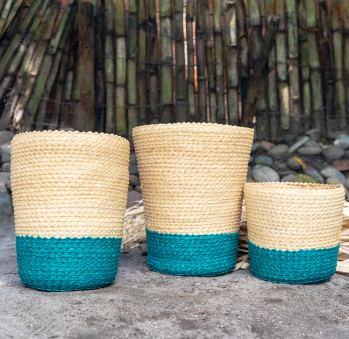
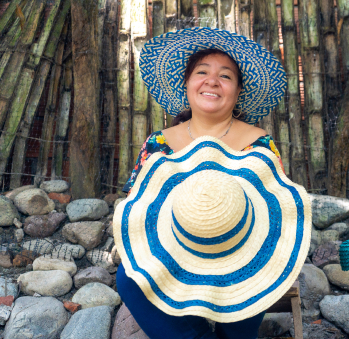
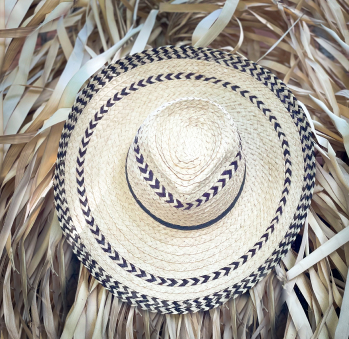
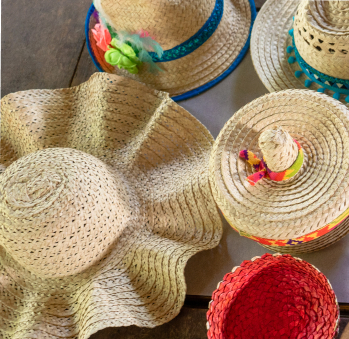
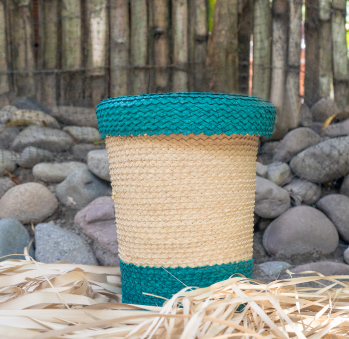






Artisans along the way
Artisans along the way
No puede copiar contenido de esta página

